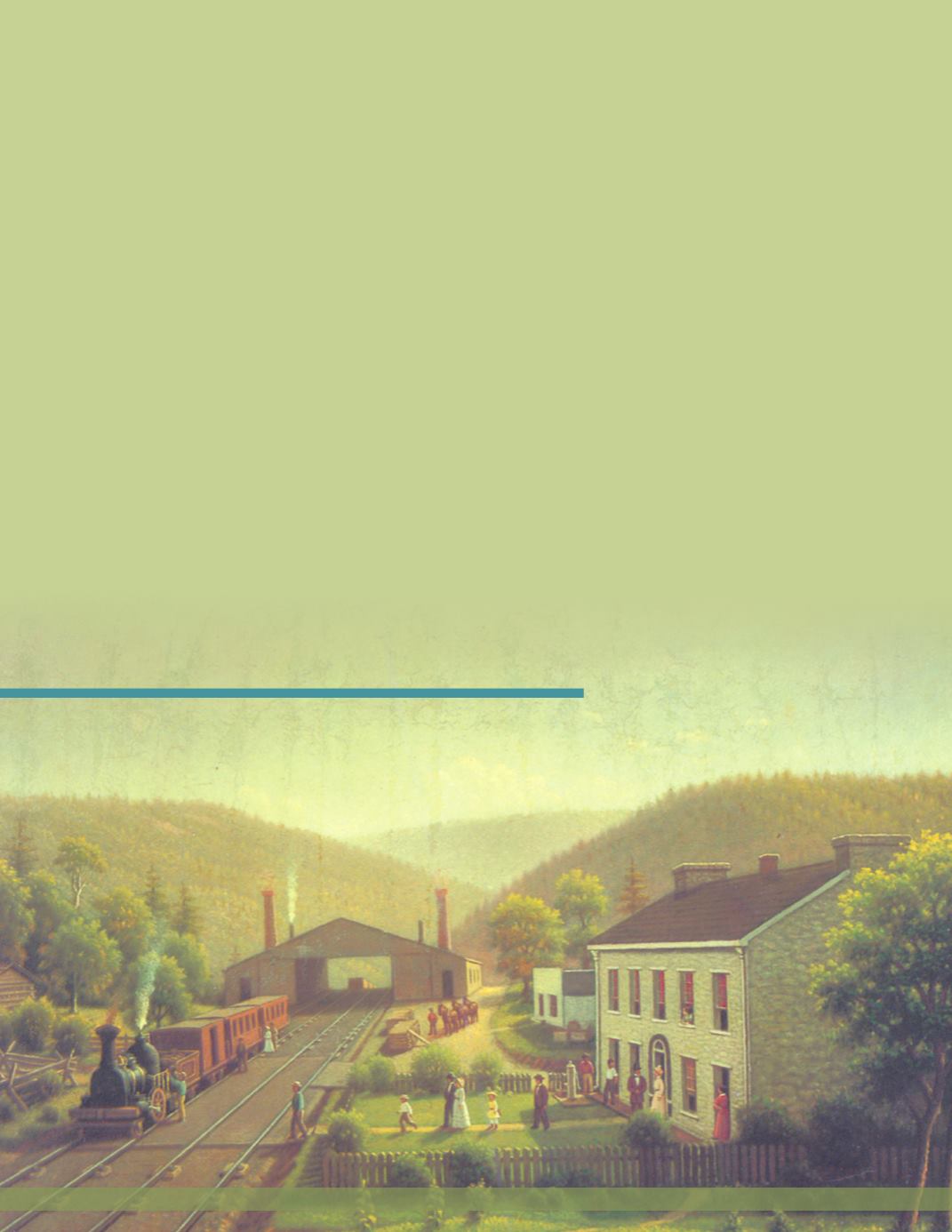
Could you travel by canal today between
Philadelphia
and
Pittsburgh
? No, it would be
impossible to do this. But from1835-1857,
thousands of people traveled between the two
cities on the
PennMain Line Canal.
Here is how
they were able to do this.
Building theMain Line was a complex, time-
consuming task. The canal was not entirely a
waterway. In two sections totaling 118miles, it was
not possible to build a canal. So engineers decided
to build a railroad. For 82miles between Philadelphia
and
Columbia
, a canal boat traveled piggyback on
railroad flatcars. Horses were used to pull the flatcar.
Later, steam locomotives were used to perform the
work. At Columbia, the flatcar was rolled down a
ramp into the canal. Once in the water, the boat was
pulled by horses walking alongside the canal. The
Main Line followed the Susquehanna and Juniata
Rivers until
Hollidaysburg
in central Pennsylvania.
At Hollidaysburg, the canal boats reached the
rugged
AlleghenyMountains
which
ascended
steeply
1,400 feet above the town. How could a canal be
built over steepmountains? If you stated, tunnel
through it, a great idea. A tunnel was part of the
solution and tunnels were used on other canals in
Lebanon and Pottsville. However, the technology did
not exist to build tunnels through the entire length of
the rugged Allegheny Mountains. This problemwas
solved by building a very unusual railroad over the
mountains. This railroad was called the
Allegheny
Portage Railroad
.
Portage
means to carry or
transport something over land for a distance.
Here is how the portage was built. Engineers laid
track on 10 steep slopes, five on each side of the
mountain. Each slope had two sets of tracks. One
set was for flatcars going up and the other set was
for themgoing down themountain. When a canal
boat was loaded upon a flatcar, horses pulled the
flatcar over the rails with a thick six-inch rope. At the
same time, they would lower flatcars down the other
set of tracks. Later, steamengines were used to
perform this work.
The Allegheny Portage stretched for 36miles. On
the other side of themountain, near
Johnstown
, the
canal boat was lowered into the canal water. It took
another 28 hours to complete the journey to
Pittsburgh. In total, it took a canal boat four days to
travel fromPhiladelphia to Pittsburgh. This was a
tremendous improvement over the six weeks it took
to travel by wagon.
Building and traveling by canals provided several
advantages for our state. Canals: 1) opened the
western part of the state to settlement; 2) promoted
rapid growth of towns along their routes; 3) provided
jobs; and 4) encouraged economic growth.
During the Allegheny Portage Railroad’s 23 years of operation, The Lemon
House Inn and Tavern served passengers waiting to be hauled up Incline Plane
#6. Today, the LemonHouse is aNational Historic Site open to visitors.
Pennsylvania Catches Canal Fever
65


